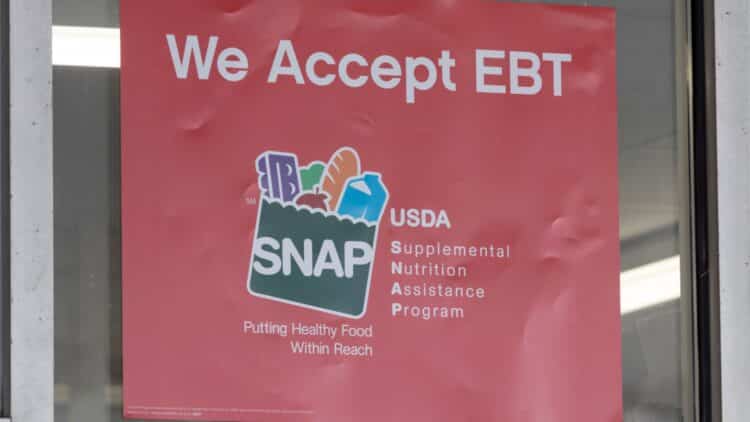The end of October is approaching, and with it would come relief for millions of American families. That’s because the end of the month is when Electronic Benefit Transfer (EBT) cards are reloaded with funds from the Supplemental Nutrition Assistance Program (SNAP). However, the government shutdown has entered the equation and disrupted everything. This brings us very bad news: November’s SNAP benefits will not be issued on time. The political dispute in Washington, D.C., is having a very high direct human cost.
The federal government shutdown, which began on October 1, 2025, has put the nation’s main food safety net at risk. The SNAP program feeds more than 42 million Americans, which is approximately one in eight people in the country. Other programs such as Social Security and Medicare, which have permanent funding, have not been affected by the government shutdown. However, SNAP is very vulnerable to this type of paralysis. Its funding requires budget approval, which is currently lacking this year. The urgent question is no longer whether the government will act, but how these vulnerable families will prepare for food uncertainty. Here are some tips to help you prepare until EBT reloads resume.
What is the USDA “Hold”?
To put it bluntly, the government failed to pass funding for the new fiscal year (FY2026), which began on October 1. When this happens, departments such as the U.S. Department of Agriculture, which manages SNAP, must suspend all non-essential functions and cannot disburse new funds. October benefits were issued because the funds were already guaranteed with money from the previous fiscal year. However, by November, the reserve will be depleted. The fact is that $8 billion is needed for the SNAP program in November alone.
This halt in aid shipments will be felt strongly in states such as Colorado, where more than 620,400 people depend directly on SNAP. Fifty percent of SNAP recipients are children and 10% are older adults, the most vulnerable segments of the population.
Texas, for example, has warned that 3.5 million people will stop receiving assistance, and in Pennsylvania, the figure rises to almost 2 million people affected.
With an obvious domino effect, local agencies and private food banks are under immense new pressure just before the holiday season. Without government food assistance, the population is turning to private organizations.
Stretching Every Dollar
There is no point in lamenting the government shutdown; now it is up to us to plan intelligently and frugally to stretch our resources until the budgets are approved. The best strategy right now is to maximize nutrition per dollar. We must prioritize low-cost, high-nutritional-density foods with a long shelf life. In other words, instead of buying fresh or perishable products, it is better to look for ingredients that will last for weeks or months in the pantry: potatoes, flour, rice, dried legumes, and canned goods.
When it comes to fruit and vegetables, it is best to look for seasonal and local produce. This ensures that we are buying the cheapest vegetables. A great alternative is to buy them frozen; this ensures that nothing goes to waste, it is cheaper than buying them fresh, and we can be sure that they do not lose any nutritional quality (as they have been frozen efficiently as soon as they were harvested).
People on social media call it the survival trio: filling carbohydrates such as rice (buying in bulk is the most economical option), oats (a complete breakfast with fiber), and dry pasta (the easiest way to quickly feed a family).
On the other hand, there is inexpensive protein in legumes: beans, lentils, peas, and so on. We strongly recommend buying them dry, as they are up to 10 times cheaper than buying pre-cooked cans. This is a time when every penny counts, and we will have to invest more time in cooking in order to save on our shopping cart.
Finally, we have long-lasting root vegetables, such as potatoes and sweet potatoes. And to boost flavor, it’s important to invest in a few key spices: garlic, onion, chili powder, cumin, and concentrated bouillon cubes. If you need inspiration, there are many influencers on YouTube who are able to do very creative things with very affordable ingredients.

